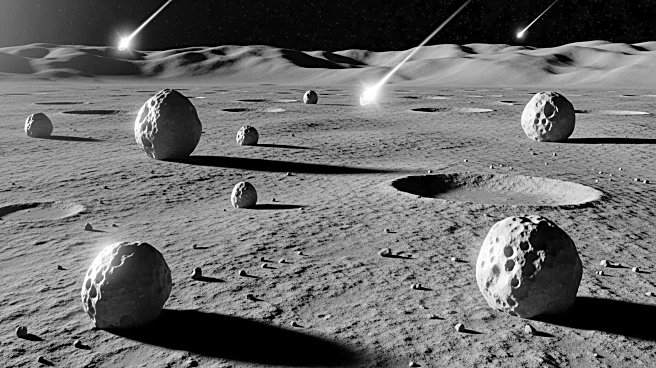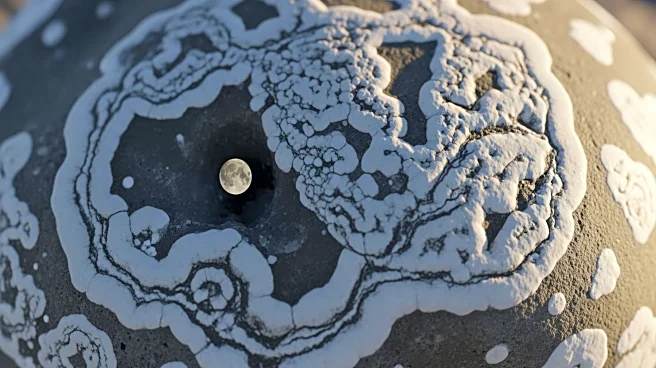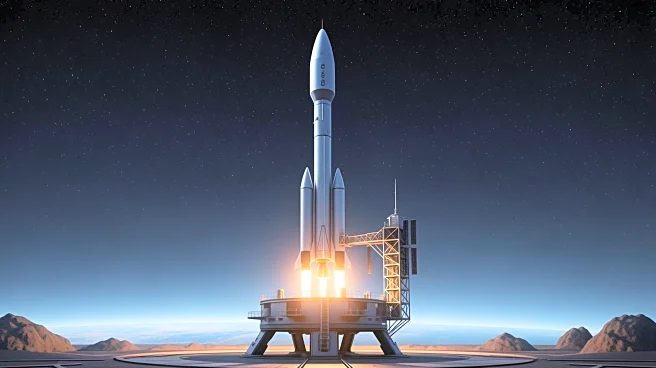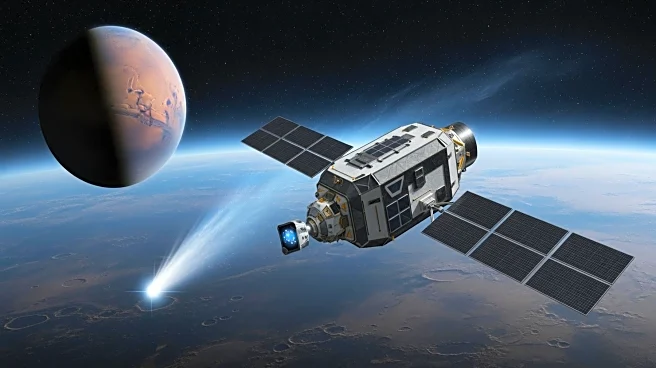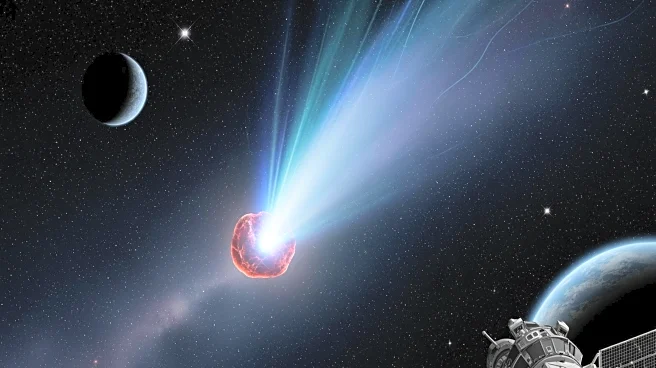What's Happening?
China's Chang'e 6 mission has successfully returned samples from the Moon's far side, specifically from the South Pole–Aitken Basin. These samples include fragments of rare meteorites known as CI chondrites,
which are rich in carbon and water. The discovery was made using mass spectrometry and isotopic analysis by scientists from the Guangzhou Institute of Geochemistry. CI chondrites are believed to be carriers of volatile elements, including water, and their presence on the Moon suggests that similar asteroids may have struck both the Earth and Moon in the past, potentially delivering water to the inner planets.
Why It's Important?
The findings from the Chang'e 6 mission provide significant insights into the origins of Earth's water. The presence of CI chondrites on the Moon supports the theory that Earth's water was delivered by ancient asteroid impacts rather than forming natively. This discovery could reshape our understanding of planetary formation and the conditions necessary for life. It highlights the Moon's role as a historical archive, preserving materials that have been weathered away on Earth, thus offering a unique perspective on the early solar system's dynamics.
What's Next?
Further analysis of the CI chondrite fragments could provide more detailed information about the composition and origins of these meteorites. Researchers may continue to explore the Moon's surface for additional samples that could offer more clues about the history of water in the solar system. The findings may also prompt new missions to the Moon and other celestial bodies to search for similar meteorites, enhancing our understanding of planetary evolution and the distribution of water in the universe.
Beyond the Headlines
The discovery of CI chondrites on the Moon not only informs scientific understanding but also raises questions about the ethical and legal implications of space exploration. As nations and private entities plan future missions, the preservation of extraterrestrial environments and the responsible use of space resources will become increasingly important. This development may influence international space policy and collaboration, emphasizing the need for shared scientific goals and sustainable exploration practices.
